This article was co-authored by Chris M. Matsko, MD. Dr. Chris M. Matsko is a retired physician based in Pittsburgh, Pennsylvania. With over 25 years of medical research experience, Dr. Matsko was awarded the Pittsburgh Cornell University Leadership Award for Excellence. He holds a BS in Nutritional Science from Cornell University and an MD from the Temple University School of Medicine in 2007. Dr. Matsko earned a Research Writing Certification from the American Medical Writers Association (AMWA) in 2016 and a Medical Writing & Editing Certification from the University of Chicago in 2017.
There are 27 references cited in this article, which can be found at the bottom of the page.
wikiHow marks an article as reader-approved once it receives enough positive feedback. In this case, 84% of readers who voted found the article helpful, earning it our reader-approved status.
This article has been viewed 54,162 times.
According to the National Stroke Organization, each year nearly 800,000 people will experience a stroke. Every four minutes someone dies from a stroke, but 80 percent of strokes are preventable. Stroke is the fifth leading cause of death and the leading cause of disability in adults in the United States.[1] There are three different types of strokes, which have similar symptoms but different treatments. During a stroke, the blood supply to a portion of the brain is disrupted, and the cells are unable to receive oxygen. Without the immediate restoration of the blood supply, the brain cells are permanently damaged, resulting in significant physical or mental disability.[2] Recognizing the symptoms and risk factors is essential to receiving prompt medical intervention when a stroke occurs.
A stroke is a medical emergency and can be life-threatening. If a person (or you) is having a stroke, call emergency services immediately.
Steps
Spotting Signs and Symptoms
-
1Look for weak facial muscles or limbs. The person may be unable to hold objects or suddenly lose balance while standing. Look for signs that only one side of the person's face or body has become weaker. One side of the person's mouth may droop when smiling or he may not be able to hold both arms up over his head.[3]
-
2Look for confusion or trouble with speaking or understanding speech. When certain areas of the brain are affected, the individual may have trouble speaking or understanding what is being said to her. Your loved one may look confused by what you are saying, respond in a way that indicates she didn’t understand what was said, slur her words, or speak in garbled noises that do not resemble speech.[4] This can be very scary. Do your best to calm her after you have called your local emergency number for emergency medical treatment.
- Sometimes the person will not be able to speak at all.
Advertisement -
3Ask if the person has vision trouble in one or both eyes. During a stroke, eyesight may be suddenly and severely affected. People report losing eyesight in one or both eyes or seeing double. Ask the person if he cannot see or is seeing double (if he is having trouble speaking, ask him to nod yes or no if possible).[5]
- You may notice that the person turns his head completely to the left to see what is in the left eye field of vision using the right eye.
-
4Watch for loss of coordination or balance. When the person loses strength in her arms or legs, you may notice the person has difficulty with balance and coordination. She may be unable to pick up a pen, or unable to coordinate walking due to one leg being unable to function correctly.[6]
- You may also notice weakness or sudden stumbling and falling.
-
5Note any sudden and severe headaches. A stroke is also called a “brain attack” and can result in a sudden headache that is described as the worst headache someone’s ever experienced. The headache may be associated with nausea and vomiting from the increased pressure in the brain.[7]
-
6Take note of a transient ischemic attack (TIA). A TIA appears to be similar to a stroke (often called a “mini stroke”) but lasts less than five minutes and leaves no lasting damage. However, it is still a medical emergency and requires evaluation and treatment to reduce the potential risk of developing a stroke. These are highly predictive of a subsequent disabling stroke in hours or days after a TIA event. Doctors believe that the symptoms are caused by a transient blockage of the arteries in the brain.[8]
- About 20 percent of people who experience a TIA will go on to have a major stroke within 90 days and about two percent will have a major stroke within two days.
- Experiencing TIA can lead to Multi-infarct dementia (MID), or memory loss, over time.
-
7Memorize the acronym FAST. FAST stands for Face, Arms, Speech, and Time, and will remind you what to check for when you suspect a person is having a stroke, as well as the importance of time. If you notice the above symptoms, it is important to call your local emergency number immediately. Minutes count when it comes to providing the best possible treatment and outcome for the person.[9]
- Face: Ask the person to smile to see if one side of the face droops.
- Arms: Ask the person to raise both arms. Can he at all? Does one arm drift downward?
- Speech: Is the person slurring speech? Is he unable to speak at all? Is the person confused by a simple request to repeat a short sentence?
- Time: Immediately call your local emergency number in the event of these symptoms. Do not hesitate.
Treating a Stroke
-
1Take appropriate action. If you or a person near you experiences these symptoms, you should contact emergency services immediately. All of the above signs are strong indicators of a stroke.[10]
- You are encouraged to call the emergency medical service near you, even if these symptoms go away quickly or are painless.
- Note the time that you first notice symptoms in order to help the medical staff accurately determine treatment.
-
2Submit to a thorough history and physical examination by a doctor. Although a medical emergency, the physician will perform a thorough and quick medical history and physical before ordering testing and treatment. Medical tests can include:[11]
- Computed tomography (CT), which is a type of x-ray imaging that takes a detailed picture of the brain immediately after a suspected stroke.
- Magnetic resonance imaging (MRI), which will also detect damage to the brain and may be used instead of, or in conjunction with, a CT scan.
- Carotid ultrasound, which is painless and will show narrowing of the carotid arteries. This may also be helpful after a TIA when no permanent damage to the brain is expected. If the doctor notices a 70 % blockage, surgery may be necessary to prevent stroke.
- Carotid angiography, which uses the insertion of a catheter, dye, and x-rays to visualize the interior of the carotid arteries.
- Echocardiogram (EKG), which a doctor can use to evaluate the health of the heart and the presence of known risk factors for stroke.
- Blood tests may be ordered to look for low blood sugar, which appears similar in nature to a stroke, and at the ability of your blood to clot, which can indicate a high-risk factor for hemorrhagic stroke.
-
3Identify the type of stroke. Although the physical symptoms and outcomes of a stroke may be similar, there are different types of strokes.[12] The way that they happen and the subsequent treatments are different. The doctor will determine the type of stroke based on the results of all the testing.
- Hemorrhagic stroke:[13] During this type of stroke blood vessels in the brain will rupture or leak blood. The blood spills into or around the brain, depending upon the location of the blood vessel, causing pressure and swelling. This damages the cells and the tissues. Intracerebral is the most common hemorrhagic stroke and happens inside the brain tissue when a blood vessel bursts. Subarachnoid hemorrhage involves bleeding between the brain and the tissue which covers the brain. This is the subarachnoid space.
- Ischemic stroke: This is the most common type of stroke and accounts for 87 percent of diagnosed strokes.[14] A blockage in an artery in the brain from a blood clot (also called thrombus) or arterial buildup (atherosclerosis) stops the flow of blood and oxygen to the brain tissue and cells, causing inadequate blood flow (ischemia), resulting in an ischemic stroke.
-
4Expect emergency treatment for a hemorrhagic stroke. In cases of a hemorrhagic stroke, doctors will work quickly to stop the associated bleeding. These treatments may include:[15]
- Surgical clipping or endovascular embolization to stop bleeding at the base of an aneurysm, if that was the cause of the stroke.
- Surgery to evacuate the blood that has not absorbed into the brain tissue and to relieve the pressure on the brain (usually severe cases).
- Surgery to remove an arteriovenous malformation if the AVM is located in an accessible area. Stereotactic radiosurgery is an advanced technique that is minimally invasive and used to remove the AVM.
- Intracranial bypass to increase blood flow in some specific cases.
- Immediately discontinuing blood thinners, which make it more difficult to stop a bleed in the brain.
- Supportive medical care as the blood is reabsorbed by the body, such as it is after a bruise.
-
5Expect medications and further treatment in cases of an ischemic stroke. Both medications and medical treatments may be used to stop a stroke or prevent further damage to the brain. Some of these options may include:[16]
- Tissue plasminogen activators (TPAs) to break up blood clots in the arteries of the brain. The medication is injected into the arm of the person experiencing a stroke from a clot. It must be used within four hours of the start of the stroke; the earlier it is administered, the better the results.
- Antiplatelet medications to stop further clotting in the brain and more damage. However, these medications must be taken within forty-eight hours, and they will do even more damage if the person has had a hemorrhagic stroke, so proper diagnosis is crucial.
- Carotid endarterectomy or angioplasty if heart disease is present. During this procedure, a surgeon removes the inner lining or the carotid artery if it is blocked with plaque or has become thick and stiff. This will open the carotid vessels and provide more oxygenated blood to the brain and is performed when there is at least 70% blockage in the artery.
- Using intra-arterial thrombolysis, during which a surgeon inserts a catheter in the groin and threads it up to the brain where he or she can release medication directly near the areas of the clots that need to be eliminated.
Identifying Risk Factors
-
1Take your age into account. Age is the most important risk factor when determining stroke risk. The risk of having a stroke nearly doubles every ten years after people reach 55 years of age.[17]
-
2Take previous strokes or TIAs into account. One of the biggest risk factors for a stroke is if the person has already suffered from a stroke or transient ischemic attack (“mini-stroke”) in the past.[18] Work closely with your doctor to minimize other risk factors if you have one of these events in your history.
-
3Note that women are more likely to die from stroke. Though men are more likely to suffer from a stroke, women are more likely to suffer from a fatal stroke. The use of birth control pills also increases the risk of stroke in women.[19]
-
4Be aware of atrial fibrillation (AF). Atrial fibrillation is a rapid and weakened irregular beating in the left atrium of the heart. The condition leads to a slowing of blood flow, which increases the risk of blood clots. A doctor can diagnose AF with an electrocardiogram (ECG).[20]
- Symptoms of AF include a fluttering feeling in the chest, chest pain, lightheadedness, shortness of breath, and fatigue.
-
5Note the presence of arteriovenous malformations (AVMs). These malformations cause blood vessels in or around the brain to bypass normal tissue in ways that increase risk of stroke. AVMs are most often congenital (though not hereditary), and they occur in less than 1 percent of the population. However, they are more common in men than women.[21]
-
6Get tested for peripheral artery disease. Peripheral artery disease is a condition in which your arteries narrow. This narrowing of the arteries makes clotting more likely and prevents the proper flow of blood throughout your body.[22]
- The arteries in your legs are the ones usually affected.
- Peripheral artery disease is a main risk factor for stroke.
-
7Watch your blood pressure. High blood pressure puts undue stress on your arteries and other blood vessels. This can create weak spots that rupture easily (hemorrhagic stroke) or thin spots that fill up with blood and balloon out from the artery wall (called an aneurysm).[23]
- Damage to the arteries can also lead to the formation of clots and impaired blood circulation to cause ischemic strokes.
-
8Know the risks of diabetes mellitus. If you suffer from diabetes, you have a greater risk of stroke because of the health problems associated with diabetes. If you suffer from diabetes, you may also have other health problems such as high cholesterol, blood pressure, and other forms heart disease, all of which can put you at an increased risk of stroke.[24]
-
9Reduce your cholesterol levels. High cholesterol is also a large risk factor for stroke. High cholesterol leads to plaque formation in the arteries and can block blood flow, which leads to stroke. Maintain a healthy diet low in trans fats to maintain appropriate cholesterol levels.[25]
-
10Abstain from tobacco use. Smoking tobacco damages both the heart and blood vessels. Additionally, nicotine use raises your blood pressure. Both of these issues put you at greater risk of stroke.[26]
- Even exposure to secondhand smoke from others smoking raises the risk of stroke in nonsmokers.
-
11Reduce your alcohol consumption. Consuming alcohol in excess can cause various medical conditions, such as high blood pressure and diabetes, that could increase your risk of stroke.[27]
- Alcohol consumption causes platelets to clump, which can lead to stroke or heart attack. Excess drinking can also cause cardiomyopathy (weakness or failing of heart muscles) and abnormalities of heart rhythm, like atrial fibrillation, which can cause the clot formation and lead to stroke.
- The CDC recommends that women have no more than one alcoholic beverage each day and that men have no more than two.[28]
-
12Manage your weight to avoid obesity. Being obese can lead to medical conditions such as diabetes and high blood pressure, which increase the chances of being affected by stroke.[29]
-
13Exercise to maintain good health. Exercising regularly will effectively prevent many of the aforementioned conditions, such as high blood pressure, high cholesterol, and diabetes. Aim for at least thirty minutes of cardio exercise every day.[30]
-
14Take your family background into consideration. Certain ethnicities are more prone to stroke than others. This is due to a variety of genetic and physical attributes. Blacks, Hispanics, American Indians, and Alaska Natives are all at a greater risk of stroke based on predispositions.[31]
- Blacks and Hispanics are also at a higher risk for sickle cell disease, which can cause red blood cells to form in an abnormal shape that makes them more likely to get stuck in blood vessels, leading to a higher potential for ischemic stroke.[32]
Warnings
- Although there is no permanent damage following a TIA, it is a significant warning sign that another and larger stroke or heart attack may be imminent. If you or a loved one has experienced stroke-like symptoms that seem to resolve in a matter of a few minutes, it is very important to seek medical care and treatment to reduce the potential of experiencing a more severe stroke.⧼thumbs_response⧽
- Though this article offers medical information pertaining to stroke, it should not be considered medical advice. Always seek immediate medical attention if you think you or a loved one are experiencing a stroke.⧼thumbs_response⧽
References
- ↑ https://www.stroke.org/en/about-stroke
- ↑ https://www.nhlbi.nih.gov/health/stroke
- ↑ https://www.cdc.gov/stroke/signs_symptoms.htm
- ↑ https://www.nhlbi.nih.gov/health/stroke/symptoms
- ↑ https://www.nhs.uk/conditions/stroke/symptoms/
- ↑ https://www.nhlbi.nih.gov/health/stroke/symptoms
- ↑ https://www.nhlbi.nih.gov/health/stroke/symptoms
- ↑ https://www.stroke.org/en/about-stroke/types-of-stroke/tia-transient-ischemic-attack/what-is-a-tia
- ↑ https://www.stroke.org/en/about-stroke/stroke-symptoms-act-fast
- ↑ https://my.clevelandclinic.org/health/articles/13399-stroke-signs--symptoms-calling-911
- ↑ https://www.nhs.uk/conditions/stroke/diagnosis/
- ↑ https://www.cdc.gov/stroke/types_of_stroke.htm
- ↑ https://www.stroke.org/en/about-stroke/types-of-stroke/hemorrhagic-strokes-bleeds
- ↑ https://www.stroke.org/en/about-stroke/types-of-stroke/ischemic-stroke-clots
- ↑ https://emedicine.medscape.com/article/1916662-treatment#showall
- ↑ https://www.stroke.org/en/about-stroke/types-of-stroke/ischemic-stroke-clots/ischemic-stroke-treatment
- ↑ https://www.hopkinsmedicine.org/health/conditions-and-diseases/stroke/risk-factors-for-stroke
- ↑ https://www.hopkinsmedicine.org/health/conditions-and-diseases/stroke/risk-factors-for-stroke
- ↑ https://www.cdc.gov/stroke/women.htm
- ↑ https://my.clevelandclinic.org/health/diseases/16765-atrial-fibrillation-afib
- ↑ https://www.stroke.org/en/about-stroke/types-of-stroke/hemorrhagic-strokes-bleeds/what-is-an-arteriovenous-malformation
- ↑ https://www.cdc.gov/heartdisease/PAD.htm
- ↑ http://www.cdc.gov/stroke/conditions.htm
- ↑ https://www.ncbi.nlm.nih.gov/pmc/articles/PMC5483423/
- ↑ http://www.cdc.gov/stroke/conditions.htm
- ↑ http://www.cdc.gov/stroke/behavior.htm
- ↑ https://www.cdc.gov/stroke/behavior.htm
- ↑ https://www.cdc.gov/alcohol/fact-sheets/moderate-drinking.htm
- ↑ https://www.hopkinsmedicine.org/health/conditions-and-diseases/stroke/risk-factors-for-stroke
- ↑ https://www.cdc.gov/physicalactivity/basics/adults/index.htm
- ↑ http://www.cdc.gov/stroke/family_history.htm
- ↑ https://www.cdc.gov/ncbddd/sicklecell/data.html
About This Article
To recognize the warning signs of a stroke, look for weak facial muscles or limbs, difficulty speaking, confusion, loss of coordination, vision problems, and severe headaches. If you're worried that you or someone you know is suffering from a stroke, call emergency services immediately. Make sure you call emergency services as soon as possible since every minute counts during a stroke. When you're calling for someone else, be prepared to describe their symptoms and how long it has been so the medical staff can determine the best treatment. For advice from our Medical co-author, like how to reduce your chances of having a stroke, keep reading.
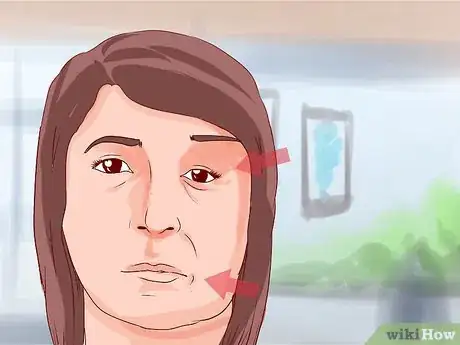

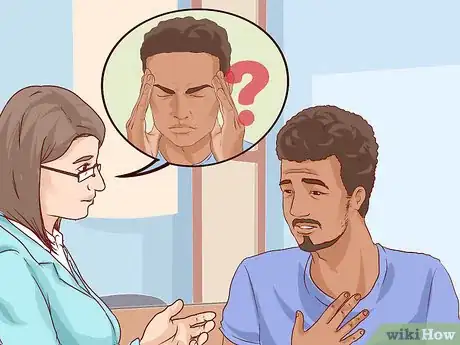


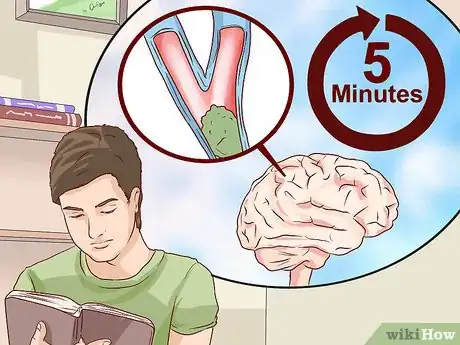
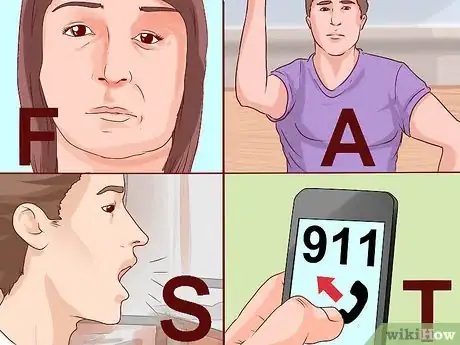
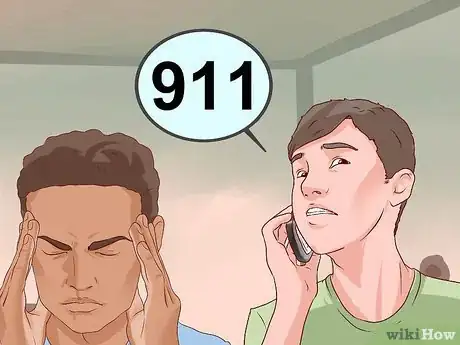
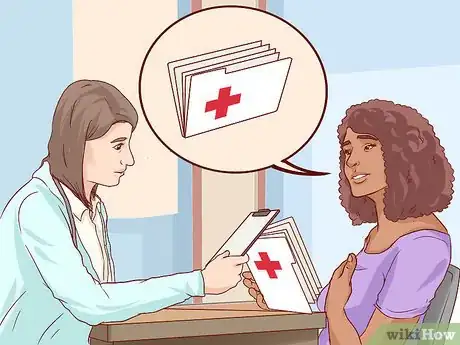
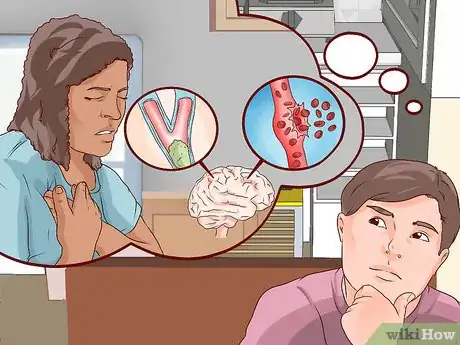



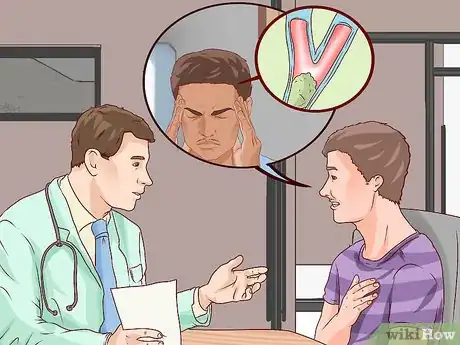

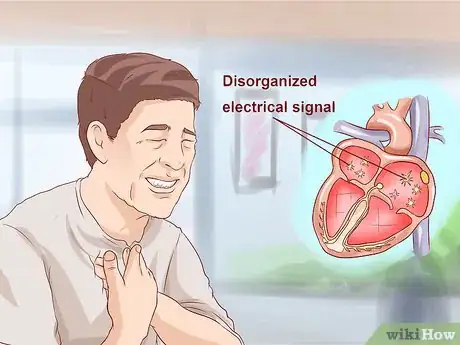
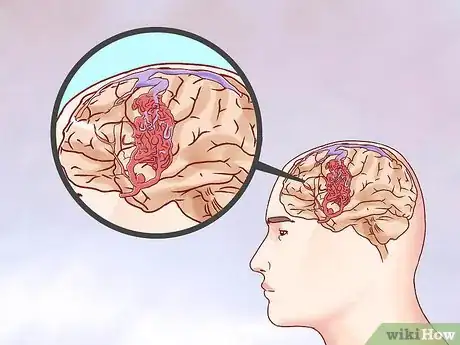
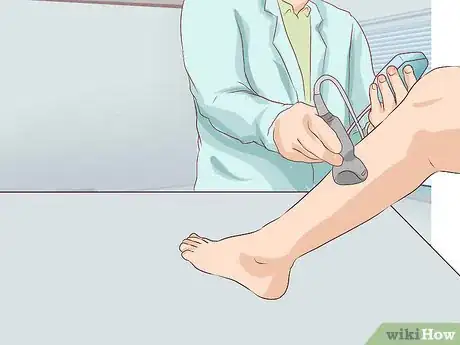
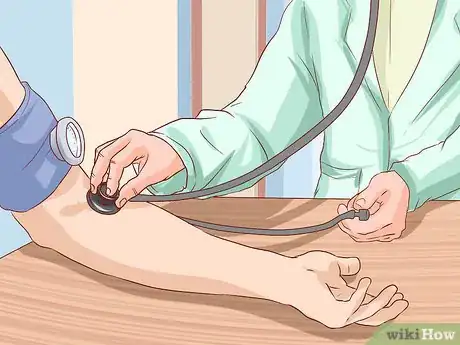
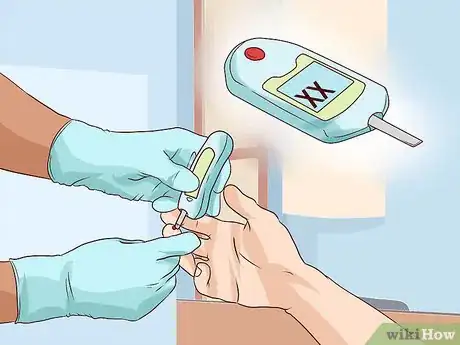
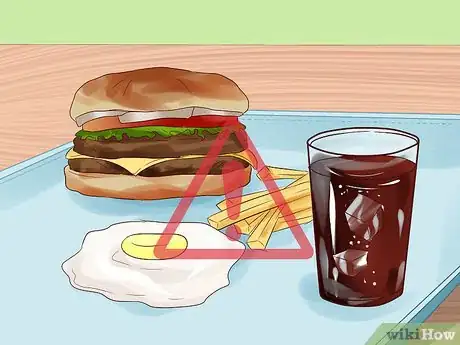
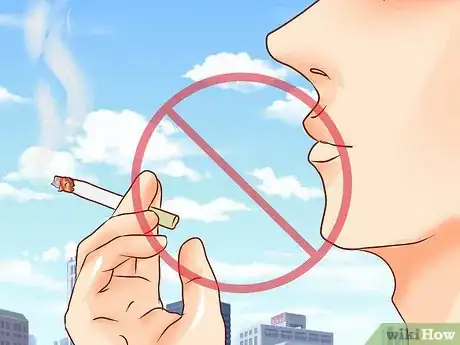
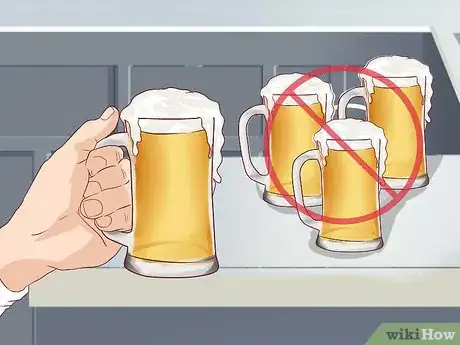
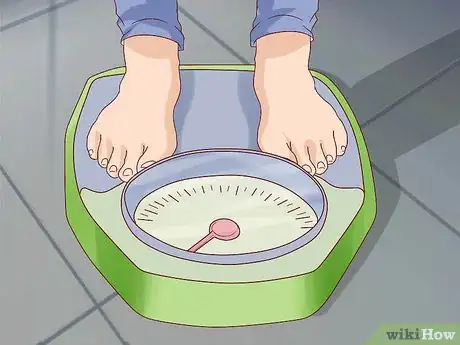



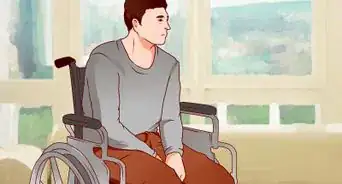


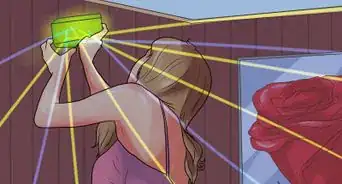
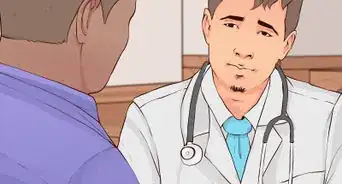
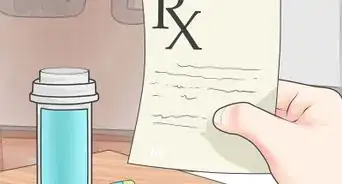













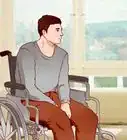
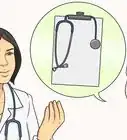
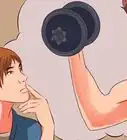



































Medical Disclaimer
The content of this article is not intended to be a substitute for professional medical advice, examination, diagnosis, or treatment. You should always contact your doctor or other qualified healthcare professional before starting, changing, or stopping any kind of health treatment.
Read More...